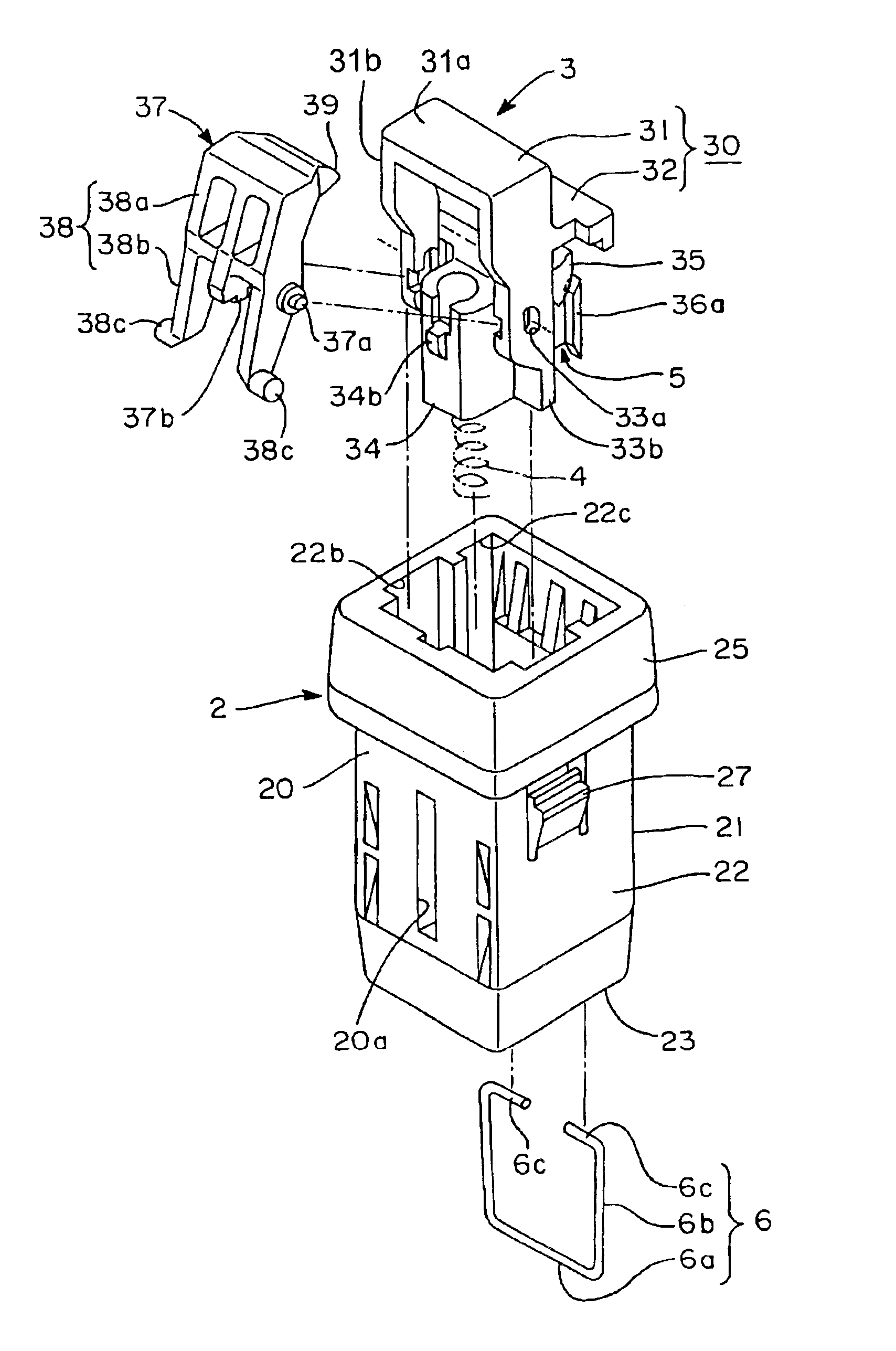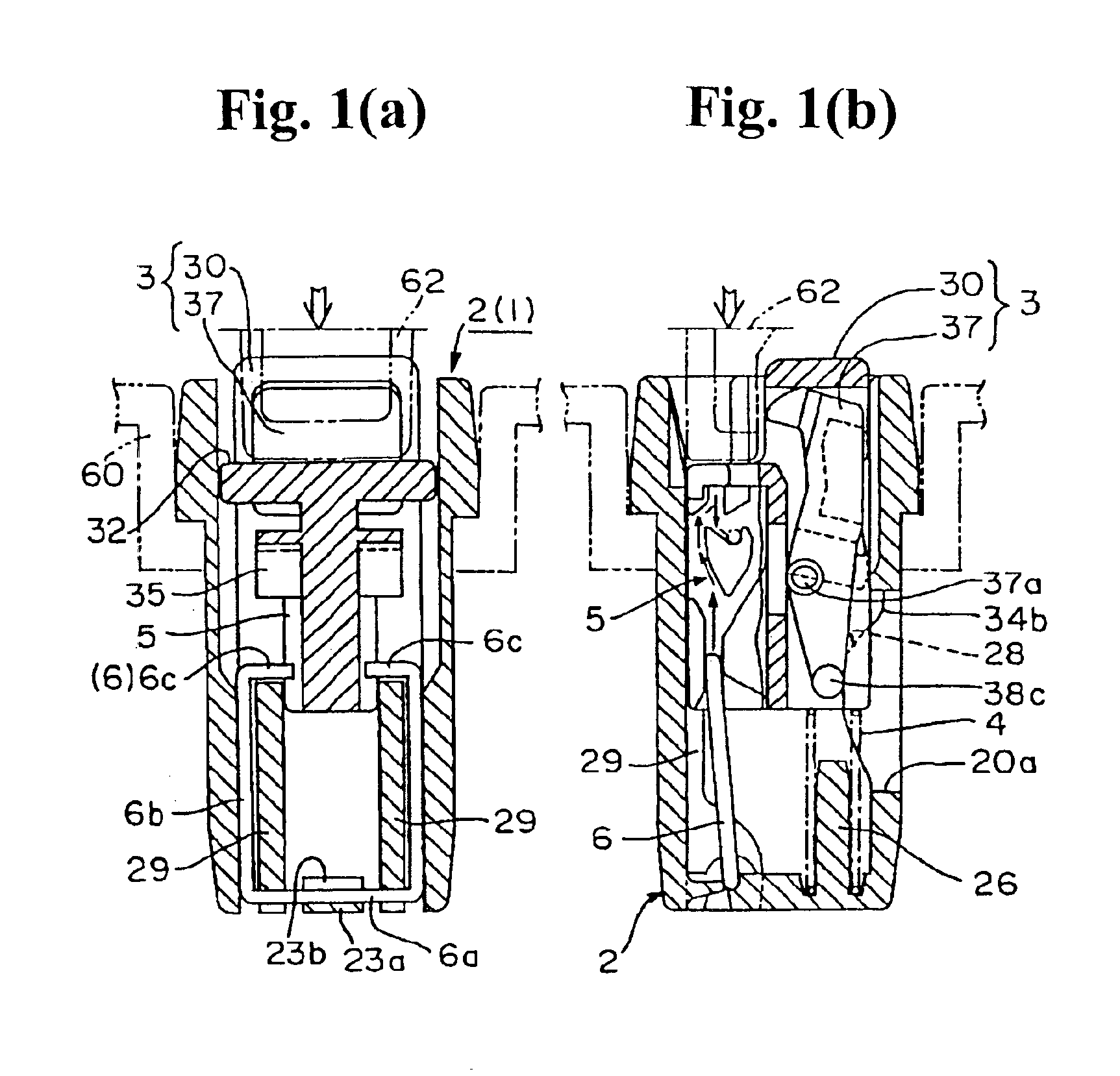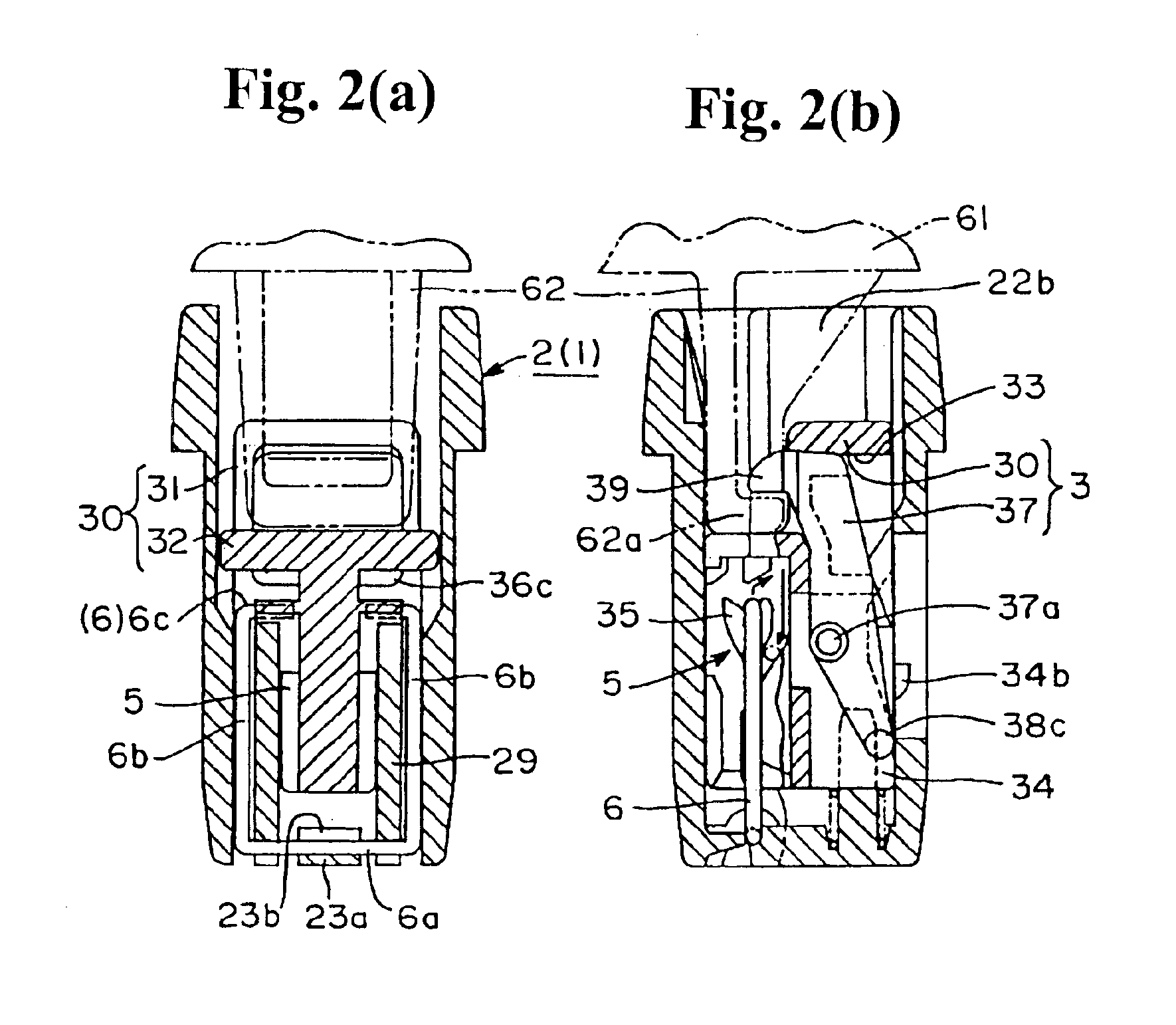Latch device
a technology of latching device and latching plate, which is applied in the direction of fastening means, carpet fasteners, mechanical devices, etc., can solve the problems of not being completely satisfied, and achieve the effect of preventing improper operation, stable positional relation, and suppressing friction of the corresponding portions
- Summary
- Abstract
- Description
- Claims
- Application Information
AI Technical Summary
Benefits of technology
Problems solved by technology
Method used
Image
Examples
Embodiment Construction
The embodiments of the present invention are explained based on the drawings. FIGS. 1(a)-1(b) through FIGS. 7(a)-7(e) show the latch device applied to the present invention. FIGS. 1(a)-1(b) and FIGS. 2(a)-2(b) show the device operation. FIGS. 1(a) and 2(a) are views sectioned generally along 1(a) and 2(a) line in FIG. 3(a), and FIGS. 1(b) and 2(b) are views sectioned generally along 1(b) and 2(b) line in FIG. 3(a). FIGS. 3(a)-3(d) show the device structure, wherein FIG. 3(a) is a top plan view, FIG. 3(b) is a front view, FIG. 3(c) is a view in which a case in FIG. 3(a) is sectioned only along line 3(c)—3(c) in FIG. 3(a), and FIG. 3(d) is a bottom view. FIG. 4 is a schematic structural view showing the exploded condition.
FIGS. 5(a)-5(f) show the case and the spring member, wherein FIGS. 5(a) and 5(b) are a top plan view and a bottom view of the case, FIGS. 5(c) and 5(d) are partly cut front view and side view, FIG. 5(e) is a cross sectional view taken along line 5(e)—5(e) in FIG. 5(a...
PUM
 Login to View More
Login to View More Abstract
Description
Claims
Application Information
 Login to View More
Login to View More - R&D
- Intellectual Property
- Life Sciences
- Materials
- Tech Scout
- Unparalleled Data Quality
- Higher Quality Content
- 60% Fewer Hallucinations
Browse by: Latest US Patents, China's latest patents, Technical Efficacy Thesaurus, Application Domain, Technology Topic, Popular Technical Reports.
© 2025 PatSnap. All rights reserved.Legal|Privacy policy|Modern Slavery Act Transparency Statement|Sitemap|About US| Contact US: help@patsnap.com



